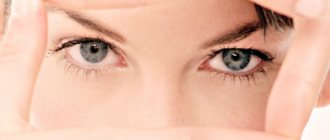The term “stress” (from the English stress - “pressure, pressure, tension, strengthening”) is borrowed from technology, where this word is used to denote an external force applied to a physical object and causing its tension, that is, a temporary or permanent change in the structure of the object . In physiology, psychology, and medicine, this term is used to designate a wide range of human conditions that arise in response to various extreme influences. Initially, the concept of stress arose in physiology to denote a nonspecific reaction of the body ( “general adaptation syndrome” ) in response to any adverse impact (G. Selye). Later it began to be used to describe human conditions in extreme conditions at the physiological, biochemical, psychological and behavioral levels.
This term combines a wide range of issues related to the origin, manifestations and consequences of extreme environmental influences, conflicts, complex and responsible activities, dangerous situations, etc. Various aspects of stress are the subject of research in the field of psychology, physiology, medicine, sociology and others Sci. Therefore, to this day, such concepts as “stress” , “distress” , “tension” , “psycho-emotional overstrain”, “emotional tension”, “emotional burnout” , etc. do not always coexist peacefully and are not always clearly delineated.
Forms of manifestation of stress:
- increase in heart rate or change in its regularity;
- pain in the heart and other organs;
- increased blood pressure and disturbances in the gastrointestinal tract;
- psychomotor dysfunction (excessive muscle tension, especially often in the face and “collar” area, hand tremors, changes in breathing rhythm, voice tremors, speech impairment);
- change in habitual lifestyle (change in daily routine, sleep disturbance, abandonment of useful habits and replacing them with inappropriate ones);
- decreased labor productivity, increased fatigue;
- regular appearance of negative emotions (irritability, anger, fear, unmotivated aggression, depression);
— the occurrence of neurotic conditions (neurosis of anxious expectations, asthenic neurosis, etc.).
The reasons that can cause psychological stress are as follows:
— living and working conditions;
— interaction with other people;
— implementation of negative parental programs;
- inadequate attitudes and beliefs of the individual himself;
— impossibility of realizing an urgent need;
— political and economic factors, etc.
Methods and methods of mental self-regulation and relaxation
- Autogenic training (autotraining) according to Schultz
Autogenic training is one of the options for self-hypnosis. With its help, a person can have a significant influence on mental and vegetative processes in the body, including those that cannot be consciously regulated. The mechanisms of the phenomena occurring in this case remain unclear.
In the 1930s, Johann Schultz, combining the experience of Western and Eastern psychotherapy, created his own direction of self-hypnosis, calling it autogenic training (AT). AT exercises, according to Schultz, are divided into two stages - initial and higher.
The initial stage includes 6 exercises, thanks to which you can learn to voluntarily influence a number of body processes that are not normally subject to conscious control. The result of this stage of AT is 6 skills: cause a feeling of heaviness in the limbs. cause a feeling of warmth in the extremities, normalize the rhythm of cardiac activity, normalize the rhythm of breathing, cause a feeling of warmth in the epigastric region, cause a feeling of coolness in the forehead.
The highest level of Schultz's auto-training was actually a modified version of Raja Yoga and was available only to individual patients.
Subsequently, the method of autogenic training was widely used by various psychotherapists and was significantly modified in accordance with applied tasks. At present, AT has fully passed practical testing and is widely used in medicine, psychotherapy, sports, military affairs, pedagogy and other areas of human practice.
- Self-regulation of breathing rhythm (breathing exercises)
It is well known that the rhythm, frequency and depth of breathing are not only associated with the regulation of the cardiovascular system, but also affect the state of the nervous system, and in particular, determine the degree of excitation of those nerve centers that are responsible for controlling muscle tone. That is why, and also due to the possibility of voluntary regulation of external respiration, special training in breathing control is an effective means of influencing the functional state of a person.
With strong arousal and emotional tension, a person often experiences disturbances in the rhythm of breathing or its delay. It has also been noted that deep and even, as well as infrequent breathing has a calming effect, while frequent, intermittent breathing provides a high level of activation of the body by increasing the oxygen content in the blood and reflex effects from the receptors of the lungs and diaphragm.
In addition, the influence of breathing exercises on the emotional state and the ability to voluntarily concentrate attention has been noted by many authors. With the help of special rhythmic breathing, the practitioner switches attention to his bodily sensations and breathing movements and achieves emotional calm and normalization of the state of all body functions. The calming effect of breathing exercises is also explained by the relaxing effect on the endings of the vagus nerve, which is richly represented along all the respiratory tracts.
There are two main ways of breathing: chest and abdominal. The first is accomplished by contraction of the intercostal muscles, and the second by contraction of the diaphragm. Abdominal breathing (belly breathing) is considered more physiological, although outwardly it does not look as aesthetically pleasing. Nevertheless, abdominal breathing has a pronounced healing effect on the processes of digestion and pulmonary ventilation (especially their lower lobes).
The physiological mechanism of the influence of breathing on the functional state of the body has been studied in sufficient detail. Breathing exercises in different rhythms massage the abdominal organs, eliminate hypoxia, normalize the state of the emotional-volitional sphere and attention, which determines its use in cases of emotional stress, sleep disorders, breathing disorders, heart failure, etc. Rhythmic forced breathing reduces the excitability of some nerve centers, which also promotes muscle relaxation. Many researchers recommend short inhalation and long exhalation as a relaxing technique, and long inhalation and short exhalation as a mobilizing technique.
The use of breathing exercises during self-regulation classes is aimed, firstly, at developing the skill of free and rhythmic breathing and, secondly, at mastering a number of self-hypnosis and self-programming techniques in the rhythm of breathing, in which a certain ratio of the duration of the inhalation and exhalation phases is maintained.
Most of the techniques of respiratory self-regulation are borrowed from oriental health systems. Complexes of such exercises, supplemented and modified during their practical application, are described in the works of various authors.
- Neuromuscular (or progressive) relaxation according to Jacobson
In the 30s of the last century, Edmund Jacobson (in another transcription - Jacobson) published his work “ Progressive Relaxation ”, where he showed that our mental problems and our body are mutually related to each other: anxiety and worry cause muscle tension, and muscle tension , in turn, increases negative emotions. As a result, a person who often experiences stress develops a so-called “muscle corset”, which he constantly wears and which causes mental stress. The fact is that the brain, receiving an additional portion of excitement from tense muscles, becomes even more excited and sends new orders back to the muscles.
You can break this vicious circle by learning to relax your muscles, since, according to Jacobson, muscle relaxation is incompatible with anxiety. Therefore, Jacobson suggested that people learn muscle relaxation in order to relax their tense minds. He developed a technique for voluntary muscle relaxation during affective states (“neuromuscular (or “progressive”) relaxation according to Jacobson” ), which helped relieve emotional tension and was also used to prevent the occurrence of these states.
A characteristic feature of these exercises is the alternation of strong tension and quickly followed by relaxation of the corresponding muscle group. At the same time, subjectively, the process of relaxation is represented by sensations of softening, the spread of a wave of heat and pleasant heaviness in the area of the body being worked, a feeling of peace and relaxation.
- Visualization (using positive images)
Another way to get rid of stress is to try to focus not on your negative emotions, but on some positive experiences, and you should not think about your problems, but about ways to get out of them. The first step towards this is to create an appropriate verbal formula that would symbolize your future goal. It can be expressed either in one word (for example, “health”, “courage”), or it can be formulated in the form of a whole sentence (“I want to pass the exam with flying colors”). However, when using such a method of achieving a goal, we may encounter difficulties along the way. This is due to the fact that not every person’s consciousness responds well to verbal attitudes and formulas, and it is much more receptive to sensory images, therefore, in order to reduce stress, you need to learn how to create convincing, vivid, memorable images. So, for some people, visual images will be better suited, for others - auditory, for others - bodily, but the so-called one stimulates and inspires the human consciousness best. “combined” images, i.e. those images in the creation of which all or several senses took part.
In addition to the above, there are other methods of regulating stress levels, for example, neurolinguistic programming (NLP) , biofeedback (BFB) , rational psychotherapy, physical exercise, meditation and many others.







